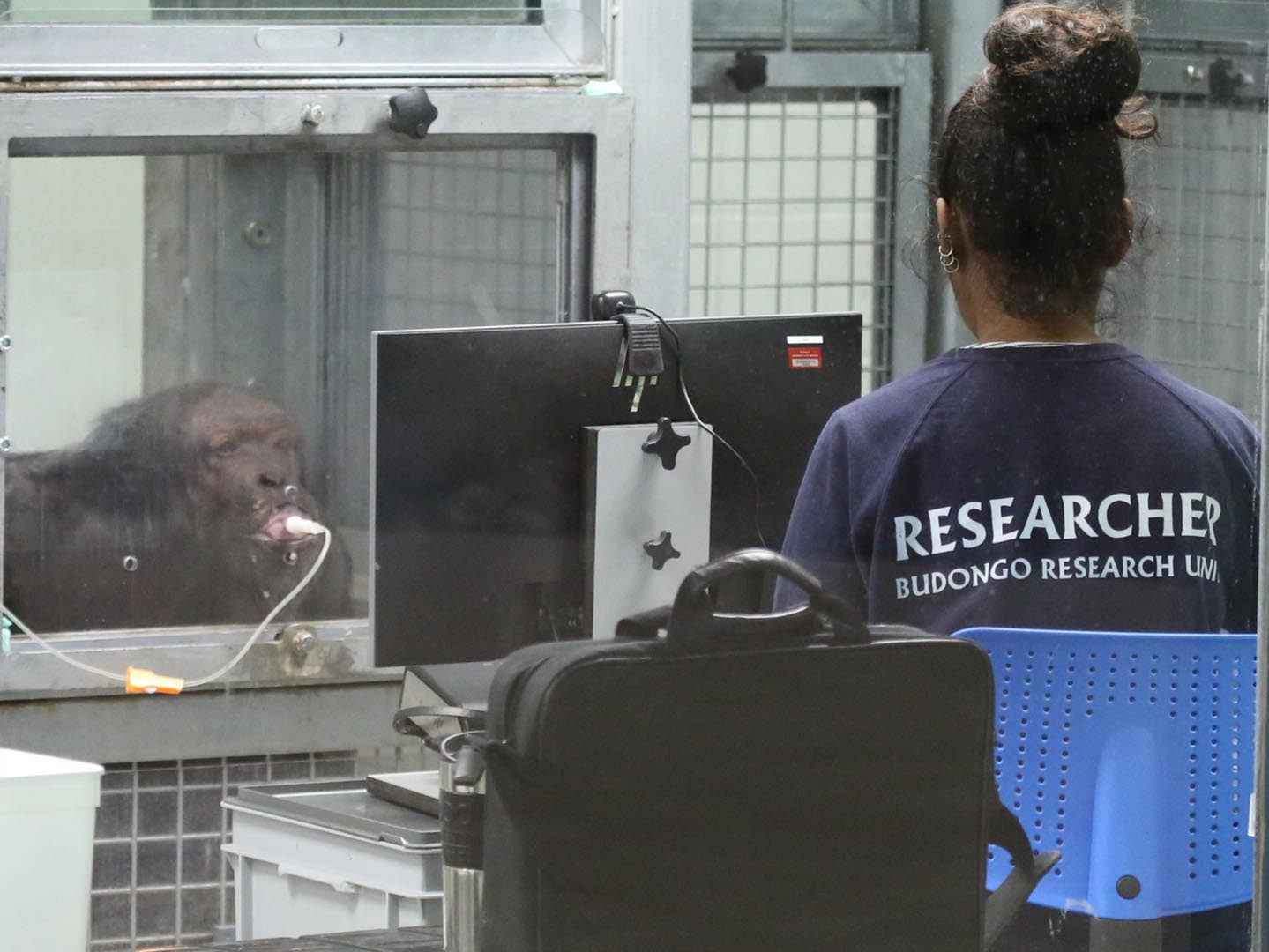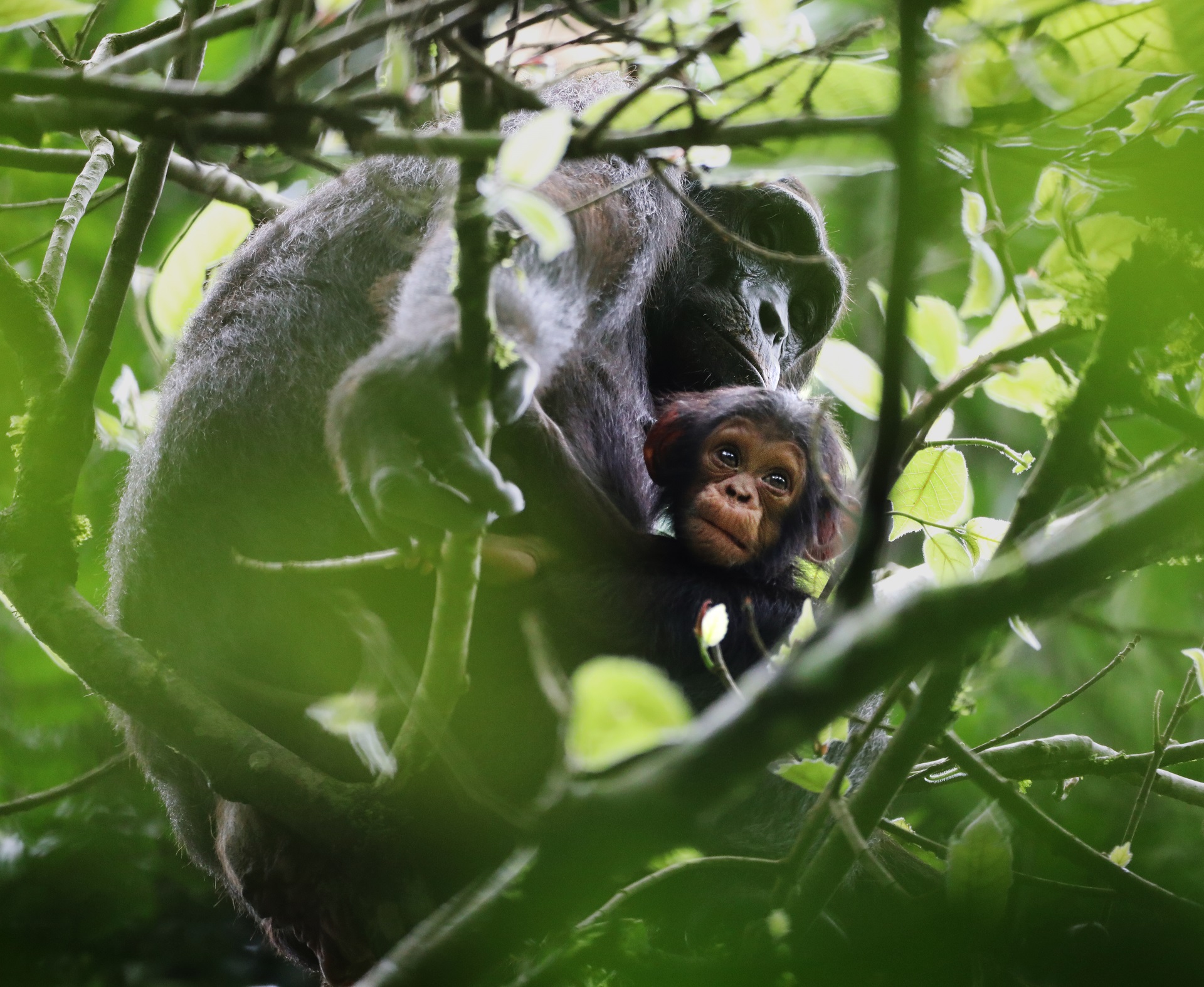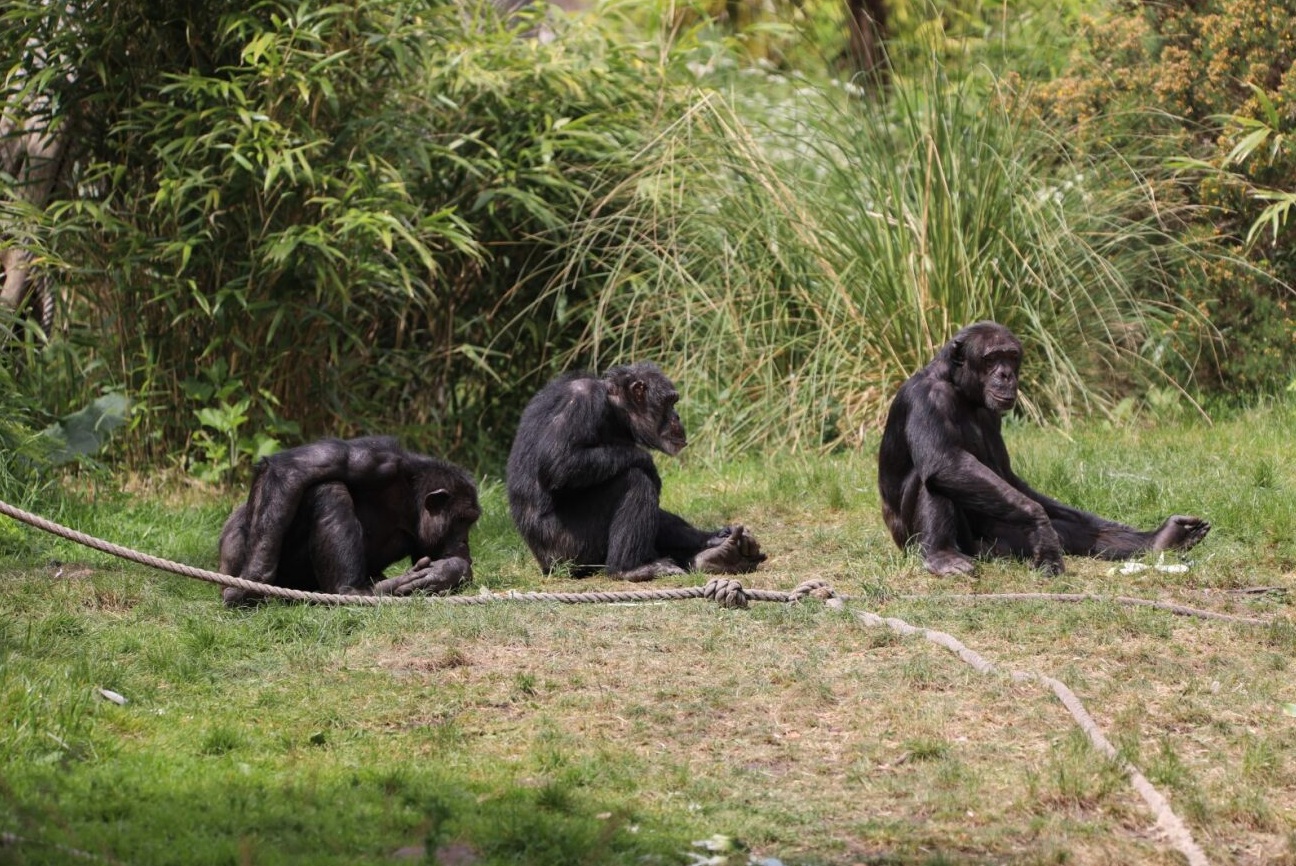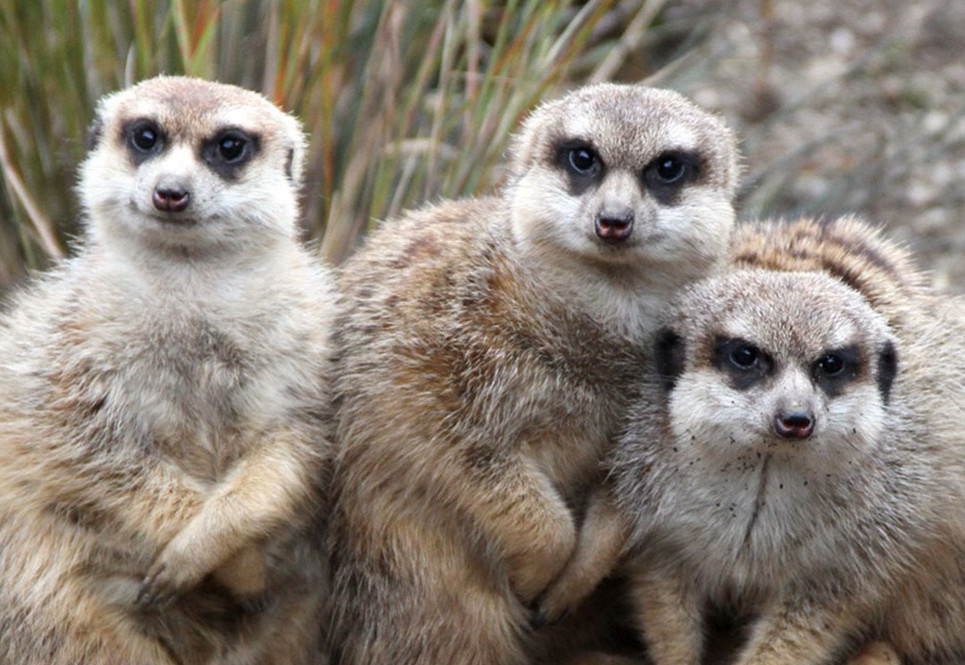Chimpanzee
Pan troglodytes
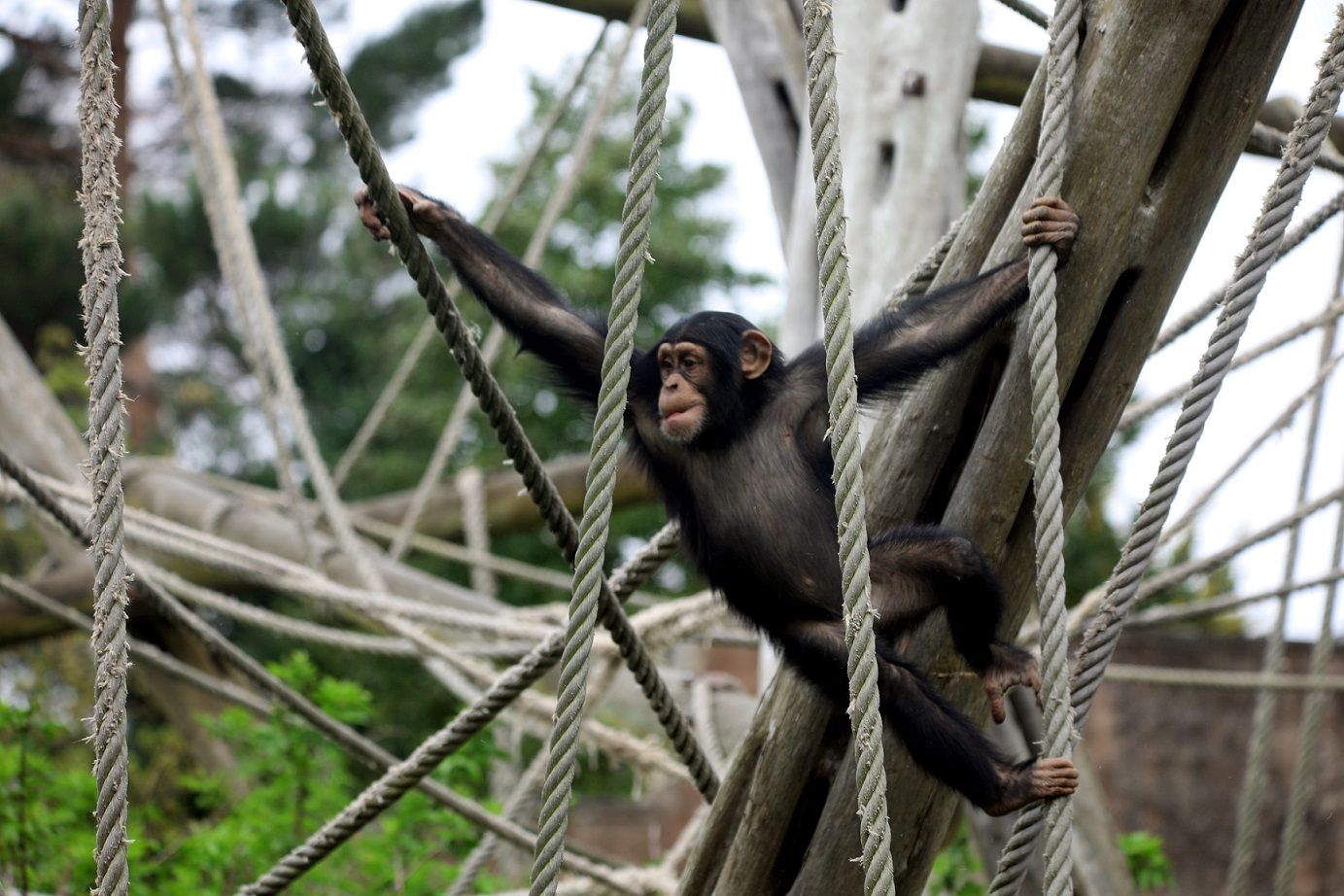
There are 13 chimpanzees here at Edinburgh Zoo – Louis, Lucy, Sophie, Lianne, Heleen, Qafzeh, Kilimi, Paul, Frek, Edith, Liberius, Velu and Masindi.
Masindi is our youngest chimp and was born on 3 February 2020. Both she and her older brother Velu are particularly special as they are both pure Western chimpanzees, a critically endangered subspecies of the common chimpanzee.
Population
Decreasing
Diet
Omnivore
Habitat
Rainforest
Fact file
Chimpanzees give birth roughly once every five years
Visiting Budongo Trail
Budongo Trail is one of the world's most innovative and interactive chimpanzee enclosures.
• With large living quarters, Budongo Trail can house up to 40 chimps
• The outdoor area boasts a huge climbing frame and plenty of vegetation with great opportunities for fun, foraging and exercise
• The indoor rooms, or ‘pods’, have different environmental conditions such as temperature, humidity and lighting, so each chimp can choose their preferred hangout
• The enclosure is designed to stimulate the chimps to use and show natural physical, social and mental behaviours that would be observed in the wild
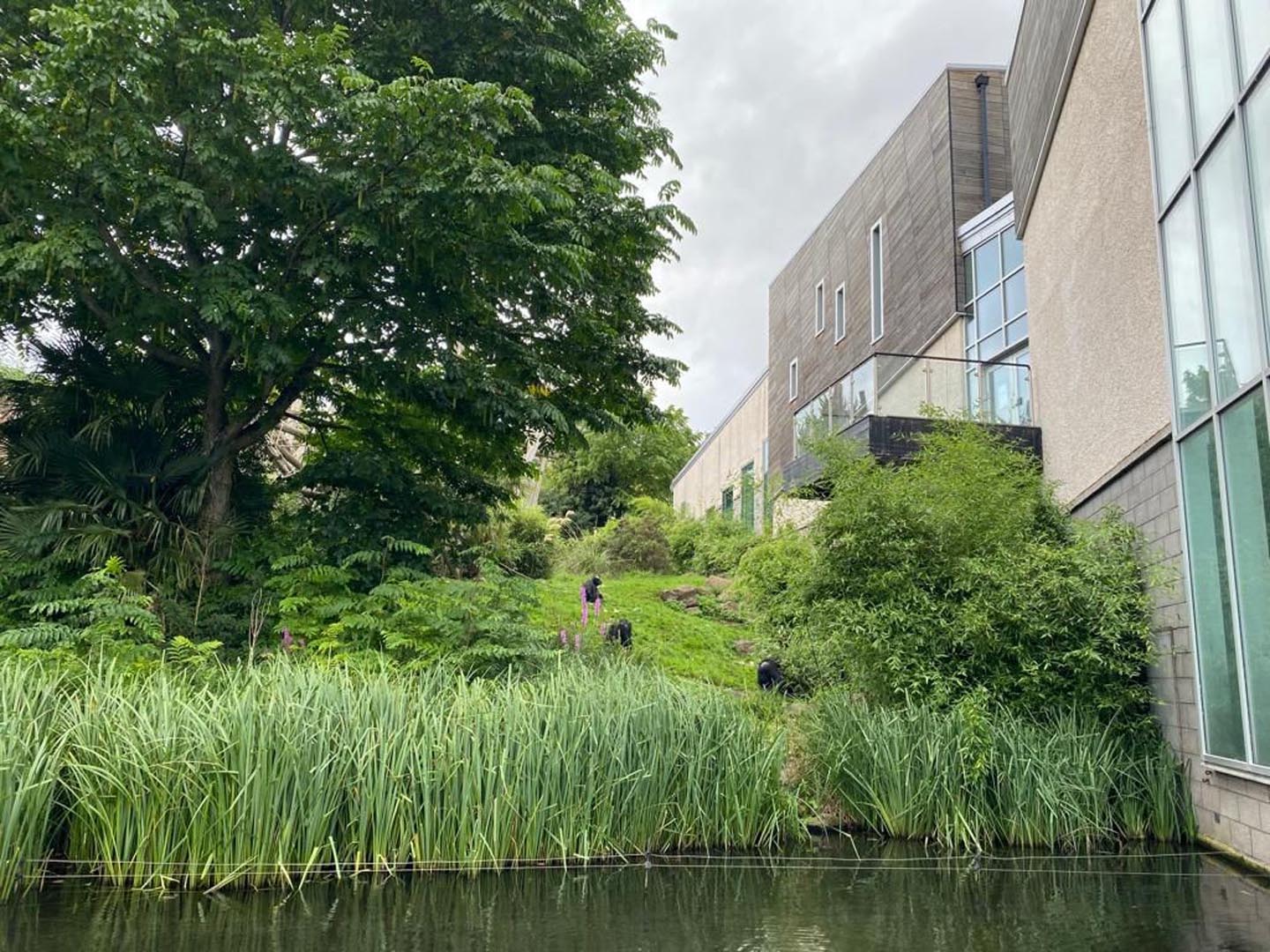
Latest chimpanzee news
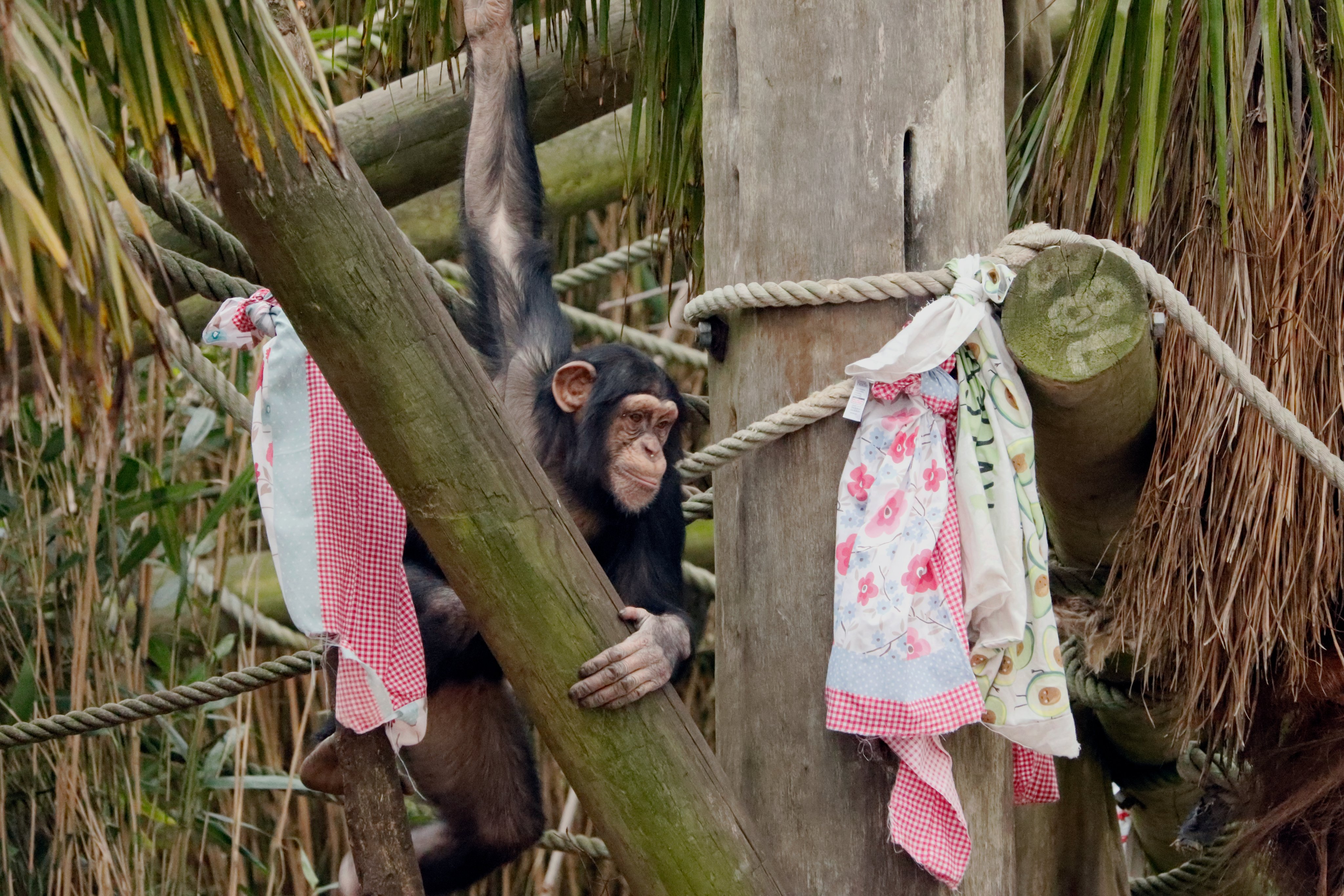
03 Feb 2025
One minute read
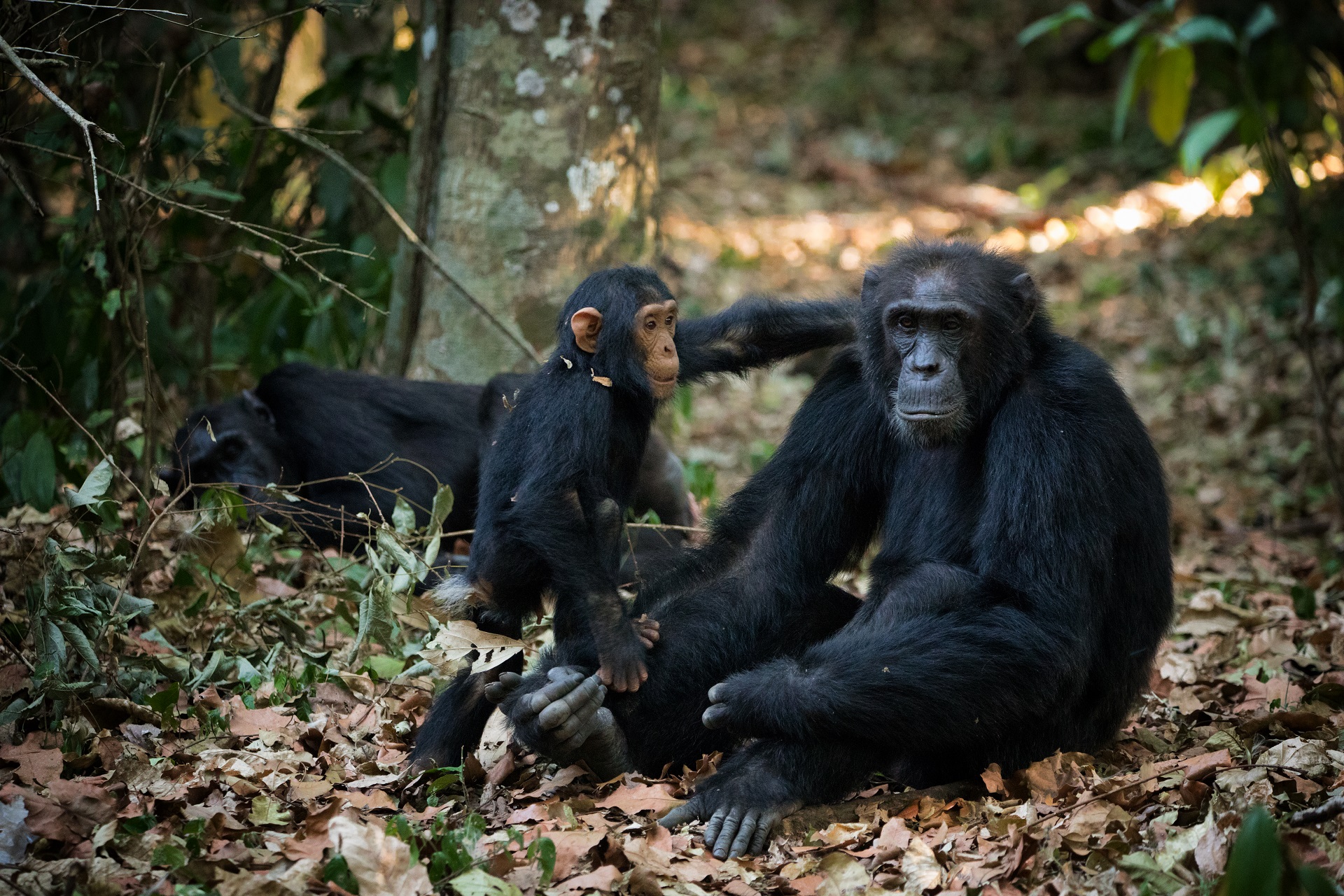
Saving chimpanzees in Uganda
Wild populations of chimpanzees are in decline due to habitat loss, poaching and disease. Since 2005, we've partnered with the Budongo Conservation Field Station (BCFS) in Uganda to protect the Budongo Forest and the chimpanzees who call it home.
Find out more about our work with Budongo Conservation Field StationBudongo Research Unit
Edinburgh Zoo is home to the Budongo Research Unit (BRU), a cutting-edge research centre in partnership with the University of St Andrews, which aims to advance scientific knowledge on chimpanzee cognition and behaviour.
The research at the BRU is interactive and entirely voluntary. Chimpanzees are presented with objects, such as a puzzle box or images on a monitor or computer screen and they learn to manipulate, touch or watch the stimuli. Researchers observe and record their behaviour in non-invasive ways using video, eye-tracking technology, computerised recording, touch-sensitive screens and thermal imaging. Using these technologies combined with more traditional methods, researchers can gain valuable insight into how chimpanzees think, learn, communicate and see their physical and social world around them.
